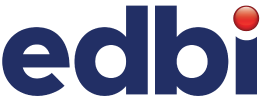Alex Konrad, FORBES STAFF
Covering Silicon Alley’s ad and tech scenes FULL BIO
Five years ago, the CEO of Coursera would’ve been in high demand on the floor of a busy tech conference floor, but speaking at Web Summit in Lisbon in November, Jeff Maggioncalda blends in. Coursera’s original product, the massive open online course, no longer carries the same buzz as artificial intelligence, autonomous vehicles or the blockchain. Today, its fans look a lot more corporate: Intel and Google, AXA and L’Oréal.
For Maggioncalda, who joined Coursera just six months ago, recapturing the magic around MOOCs is a challenge worth leaving retirement. “A lot has been written about MOOCs,” he says. “I think MOOC mania has largely burned off and turned to MOOC despair in many quarters. The fact is that online education is still taking off.”
With an industry-leading 30 million users and hundreds of millions in venture funding raised, Coursera is neither overnight success story nor startup failure. But to build a lasting business, its future increasingly depends on an area of focus that would’ve seemed unsexy in the headiest days of the MOOC rush, when it was racing against rivals such as Udacity and edX to reach new universities and millions of users. Like many startups before it, Coursera has grown up to chart a course closer to business-to-business software and the promise of larger, more consistent paychecks.
After launching Coursera for Business in August 2016, Coursera began to shift its focus to the new vertical about a year ago, says Maggioncalda, as the company saw immediate traction among customers willing to reimburse their employees’ use. “Businesses were saying, we need to upgrade our employees in digital domains, and we need it to be at broad scale and really fast,” he says. “They need to know what the emerging competencies are and get them inside people’s heads before they’re obsolete.”
Coursera has about 500 corporate customers today, up from 30 last year, with bookings growth of 400%, compared to 70 percent growth among Coursera’s paying users overall. Its most popular specialization ever was a course in the red-hot area of artificial intelligence known as deep learning, led by cofounder Andrew Ng. Another bestseller, from Johns Hopkins University, provides a crash course in data science. The pitch is different than with a typical Coursera course created by one of its 150 university partners, or by companies like Google that make and share their own. By providing tracks of three or four courses that can demonstrate competency in an emerging area, employees can advance their careers by switching teams or pursuing promotions. And by offering such opportunities, employers gain a new way to retain their up-and-coming talent.
“At a company doing a large machine learning implementation, they might decide all their engineers need a base level knowledge of one or two courses,” says Julia Stiglitz, Coursera’s vice president of enterprise and international. “They don’t have to be the machine learning experts. But for those that do need to be experts, you can set more rigorous and robust programs.”
Coursera Fights To Keep The Promise Of MOOCs Alive With Corporate Customer Push https://www.forbes.com/sites/alexkonrad/2017/12/20/coursera-goes-corporate-to-keep-alive-promise-of-moocs/
One model customer for Coursera for Business so far is AXA, the financial firm with 165,000 employees. AXA ran a three-month pilot with Coursera earlier this year of 1,000 employees across 48 countries, with each beginning a course in a topic such as data science. Fifty-five percent of pilot users completed their course, and on average each employee started three. Employees who participated ran the gamut of job types, including human resources and finance, says Stephanie Ricci, head of learning at AXA. “We’re facing many challenges as an industry and an organization, and our skills need to continuously develop in order to be relevant,” says Ricci. AXA’s solution is a combination of Coursera classes with face-to-face training; in September the company opened up Coursera to all employees worldwide. About 6,000 are now Coursera members.
A similar pilot at PayPal opened up 1,200 certificate licenses to employees and quickly had to be expanded to meet additional global demand, the company says. While employees haven’t yet received promotions due to their completing certificates, says PayPal chief learning officer Derek Hann, “there’s a fair amount of social pride” among those who’ve completed courses, with some have added badges to their internal corporate profiles. “People are positioning themselves for the next role they want, internally and externally,” says Hann, though he declined to provide completion rates for staff, saying it’s not a focus for the company given the courses are completed on employees’ own time. “I would call it a success for 2017,” Hann says.
If other companies maintain AXA’s completion rates or PayPal’s continued demand, Coursera could be sitting on a business potential larger than its original consumer one, though the majority of users of Coursera today remain non-paying individuals. Rival Udacity started making the same switch years ago when it focused on “nanodegrees” in certain fields, often in partnership with companies that sometimes are using Coursera too, like Google. With as much as $150 billion spent on corporate training each year, the opportunity is appealing to MOOC survivors, says Josh Bersin, a consultant focused on human resources and learning. “They started with this vision that they were going to deliver courses to millions of people and somehow figure out how to make money, and that didn’t work out for any of the MOOCs,” says Bersin. “Then they decided they’d make money through completion certificates, then the corporate market.”
Coursera’s partnerships with universities give it name-brand appeal with its courses for busines clients, says Bersin, but Coursera and others have had to adapt their content to fit more of the “soft skill courses” in topics like management popular in corporate learning, he adds. “That’s their challenge, to reorganize the content and infrastructure behind it. Then the question is, what is unique about their stuff versus everybody else’s?”
To Jake Schwartz, a competitor as CEO of General Assembly, Coursera’s shift to corporate is more a response to the failures of previous business models than anything else. General Assembly has been in the learning and training market for seven years, with about half its revenue coming from employer pay, the company says, and 60 percent of its evenings and weekend students. General Assembly’s online corporate programs, which include offline activities, typically get 60 percent to 70 percent engagement, according to Schwartz, making him skeptical that the typical Coursera user will be able to match AXA’s high completion rates from its pilot. “Corporate clients all seem like they can write big checks,” says Schwartz. “We find that they all play around with online providers, but when companies want to get serious about retraining workers and want to see real return on investment and results, they call up GA.”
Coursera and other MOOC providers found themselves in this position in the first place because of the cratering of the narrative around MOOCs as studies came out in 2013 and 2014 demonstrating that few free users ever finished a course. (One found only 5 percent completion across 17 Coursera classes offered by the University of Pennsylvania.) Udacity founder Sebastian Thrun declared his company was pivoting away from MOOCs in 2013, shifting his company’s focus to the nanodegrees and company-driven certifications before scooping up a $1 billion valuation in late 2015. Utah startup Pluralsight, another unicorn, claims to work with 40 percent of the country’s 500 largest businesses helping to train technical hires. Coursera, meanwhile, got into online master’s degrees and continued to work with academic institutions on its own new forms of credentials. The company had a record sales quarter in Q3 revenue, the CEO says, and has a war chest of about $85 million in the bank after a Series D funding round in June. That $64 million valued the company at about $814 million, according to data from PitchBook, though the money was largely raised from existing investors, meaning the company may not have received such a valuation on the open market.
Possible struggles at Coursera came to light in October, when Recode reported that Coursera had laid off up to 40 staffers and removed multiple executives from its management. Maggioncalda says he was restructuring the teams in the company to work more effectively, breaking down some of the silos between its business, degrees and consumer initiatives and bringing in employees who worked more like the way he operated at Financial Engines, the company he ran for 18 years and took public in 2010. “Over the years I developed a way I like to structure things,” he says. “A lot of what I was doing in the first few months was understanding the business and customers, and where we want to position the company.”
Coursera and other MOOCs have a better chance now they’re tapping into workers’ interests in advancing their careers and earning a higher salary than they did focusing on individuals’ desires for self-improvement, says Matthew Miller, a partner at Sequoia Capital who has studied the category. According to Miller, studies that took the wind out of the sails of MOOC fans in past years weren’t devastating to Coursera and its rivals for the quality of their content, but for what they demonstrated in user behaviors. “When something is not required by your job, it gets stacked to the back of everything you do in your life,” says Miller. “I think it’s naturally easier for anybody if your job is providing this.”
Even so, learning and development startups still face a loyalty challenge, says Bersin. While Coursera, Pluralsight and others would all like to be the platform providing all content to a company, businesses will naturally prefer to mix and match, he says, meaning Coursera must compete with everything from small providers to the Harvard Business Review. “It’s not an easy market with so much competition,” he says. “But there’s a lot of niches. Coursera has to decide what they want to be known for.”
For Maggioncalda, the answer to that question is still “all of the above.” Universities still need help to stay current amid changing tastes and with tech companies looking to poach professors with high salaries, he argues, while Coursera’s overall user base has continued to grow, especially outside the U.S. And the CEO points to himself as proof of Coursera’s ongoing opportunity. “I wasn’t sure that I was ever going to work again; I didn’t need to. Then this opportunity came and I said, I’m going to dedicate my life to this,” Coursera’s CEO says. “The wind is at my back, and I think we have a really interesting five to 10 years ahead of us.”

